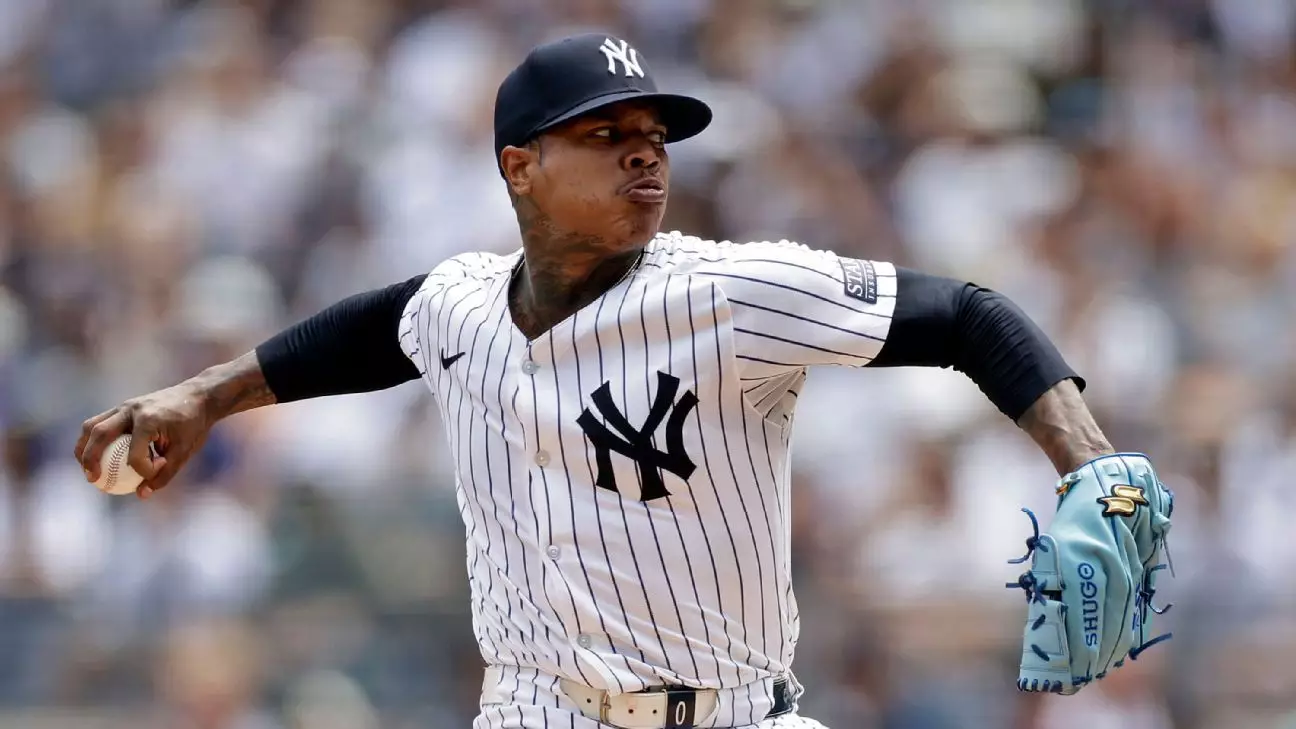The recent release of Marcus Stroman by the New York Yankees serves as a stark reminder of how rapidly baseball’s landscape is shifting. Once celebrated for his tenacity and consistency, Stroman’s tenure in the Bronx was marred by inconsistency and unmet expectations. Despite his formidable 11-year career and previous All-Star accolade, his brief stint with the Yankees highlights a deeper truth about the modern game: teams are now increasingly dismissive of veteran mediocrity in favor of fresh potential and financial flexibility.
The Yankees, a franchise with a storied history of nurturing talent and winning championships, are exemplifying a pragmatic shift. They prioritized roster flexibility and future-ready configurations, which resulted in Stroman’s departure. The move wasn’t just about performance; it was a calculated decision rooted in strategic roster management, especially considering the infusion of new pitchers acquired during the trade deadline. This underscores a broader trend: teams are valuing youth and upside over seasoned mediocrity, even when the veteran’s experience might seem invaluable at first glance.
The Performance Toll and Roster Realities
Stroman’s on-field performance was a clear driver of his release. Posting a 6.23 ERA across nine starts this season, his numbers betray the potential that once made him an All-Star. For a team like the Yankees, chasing championships, results matter exponentially. An ERA above 6.0 is a significant blemish, particularly from a supposed mid-rotation pitcher expected to stabilize the staff.
Furthermore, the Yankees’ rotation is now deeply competitive, featuring emerging talents like Cam Schlittler, alongside seasoned starters like Max Fried and Carlos Rodon. Stroman found himself squeezed out not because of a single poor outing but because of a confluence of factors: his inconsistency, injury setbacks, and the emergence of young arms eager to prove themselves. The roster crunch that followed the trade deadline exacerbated this process, with the team prioritizing versatility and future potential over veteran stability.
This scenario underscores an essential truth in contemporary baseball: performance metrics are paramount. Teams are less willing to invest in players who don’t regularly demonstrate clear, measurable value. Stroman’s ERA and injury history, combined with shifts in the roster, meant his position was increasingly tenuous. His release wasn’t merely a reflection of his own struggles but the franchise’s broader strategic recalibration.
From Uncertainty to Opportunity: The New Reality for Veterans
What lies ahead for Stroman now offers a sobering reality check for veteran players across major league baseball. Despite his previous success and experience, he faces an uncertain future, having become a free agent at a time when teams prioritize youth and high-upside prospects. The prorated minimum salary offers at best a modest return for his extensive experience—a stark contrast to the multi-million dollar contracts he’s enjoyed in the past.
This new landscape is both harsh and realistic. Veterans are increasingly seen as stopgap solutions rather than long-term investments unless they demonstrate elite performance consistently. It also signals that players like Stroman, once highly valued for their resilience and experience, must adapt or face the risk of obsolescence amid a youth-driven approach.
Moreover, the Yankees’ maneuver reflects a philosophical shift. They opted to clear a roster spot for younger options, believing that raw potential and contract flexibility outweigh the seasoned but inconsistent veteran. This move may not sit well with purists who value experience, but it aligns with the pragmatic, data-driven era of baseball management, where roster construction is about forecasting future performance rather than past accomplishments.
The Broader Implications: A Changing Culture in Baseball
Ultimately, Stroman’s release signals a larger cultural transformation within professional baseball. The days when veteran presence was a cornerstone of team leadership and stability are waning. Instead, teams now focus on building from the ground up, emphasizing agility, youth, and the ability to adapt quickly to the evolving game environment.
This shift also raises questions about loyalty, legacy, and fairness in roster decisions. Veterans who dedicated years—and often their careers—to the sport—are increasingly viewed through a transactional lens. While this might seem cold, it underscores a brutal reality: in a sport defined by relentless competition and constant innovation, only results count.
Stroman’s farewell was perhaps inevitable. What remains crucial is understanding that this is a reflection of baseball’s larger evolutionary pattern—one that values the future over the past, raw potential over experience, and flexibility over loyalty. For veterans like Stroman, this new landscape demands resilience and adaptability, or risk being discarded in favor of the next generational wave ready to claim their spot in the sun.

